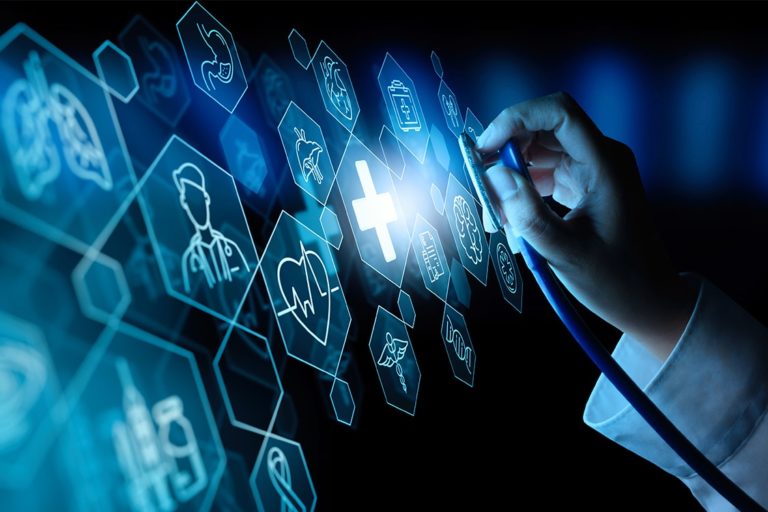A Comprehensive Overview on Just How Healthcare RCM Functions to Streamline Invoicing and Collections
Navigating the complexities of health care earnings cycle management (RCM) is important for companies intending to enhance their invoicing and collections procedures. The guide unpacks the complexities of RCM, from person registration to accounts receivable administration, offering insights into maximizing each action.
Comprehending Earnings Cycle Management
RCM is a vital management function that encompasses the whole monetary procedure of client treatment, from the first appointment setting to the last repayment of the equilibrium. It is an intricate treatment made to determine, accumulate, and manage the profits from the services provided to patients.
The RCM procedure begins when a patient schedules a consultation and expands with the individual's care journey, including billing and collections. A crucial objective is to lower the time between obtaining and offering a service settlement, hence improving the organization's financial health. RCM entails various features such as patient enrollment, insurance confirmation, charge capture, coding, declares entry, payment publishing, and taking care of rejections and allures.
Trick Elements of RCM
In the realm of Profits Cycle Monitoring (RCM), understanding its vital components is essential to achieving monetary performance within healthcare companies. RCM is an extensive procedure that includes different stages, each essential to making sure effective payment and collections. The primary components consist of individual registration, insurance policy confirmation, fee capture, coding, claim entry, settlement posting, and accounts receivable management.


Once coded, insurance claims are sent to payers, where accuracy is extremely important to prevent delays or beings rejected - Healthcare RCM. Settlement posting involves tape-recording the gotten settlements, which allows for the reconciliation of accounts. Finally, balance dues monitoring concentrates on tracking and resolving overdue insurance claims, ensuring timely follow-up and resolution
Each part of RCM is adjoined, and inadequacies in any kind of component can interfere with the whole cycle. Therefore, understanding these components is crucial for medical care companies to enhance income and enhance their financial wellness.
Approaches for Effective Payment

Systematizing invoicing procedures across the organization is another key approach. Developing clear standards for paperwork, coding, and submission aids preserve uniformity and conformity with regulative requirements. Educating personnel regularly on these treatments makes certain everybody is up-to-date with the most recent modifications in billing codes and payer policies.
Exact cost capture is essential in avoiding earnings leakage. Implementing normal audits and tracking systems permits the identification and modification of disparities prior to they affect earnings. Furthermore, maintaining open lines of communication with payers aids to swiftly deal with any disagreements or misunderstandings that may emerge.

Finally, appealing people early in the billing procedure by giving clear quotes and academic materials about their economic obligations can substantially decrease complication and enhance repayment timeliness. These techniques collectively add to an extra financially healthy and balanced and reliable payment system.
Enhancing Collections Procedures
Given the intricacies of clinical payment and the variety of payer demands, boosting the collections process entails implementing critical procedures that ensure prompt and precise payment of solutions rendered. Automation devices can aid in tracking claim conditions, sending prompt suggestions to people, and taking care of rejections more efficiently.
Training personnel to comprehend the subtleties of insurance plan and payment codes is just as important. This understanding equips them to attend to invoicing disparities promptly and communicate effectively with clients regarding their monetary obligations. In addition, clear and transparent client communications are vital. Supplying in-depth explanations of costs and supplying versatile layaway plan can raise individual complete satisfaction and timely repayments.
Regular audits of the collections process need to be conducted to recognize locations for renovation and ensure compliance with policies. By evaluating data, medical care organizations can identify patterns, anticipate potential issues, and adjust approaches as necessary (Healthcare RCM). Inevitably, a well-enhanced collections procedure not just supports monetary health and wellness however likewise adds to a more seamless experience for patients and team alike
Optimizing Earnings Streams
Structure upon the foundation of a solid collections process, medical care organizations can additionally bolster their economic stability by tactically optimizing profits streams. This involves a multi-faceted technique, starting with a thorough analysis of existing revenue resources to determine ineffectiveness have a peek at these guys and areas for growth. Using innovative data analytics devices enables companies to obtain understandings right into payer mix, individual demographics, and service usage patterns, enabling for data-driven decisions that boost earnings capture.
Implementing automated invoicing systems can substantially reduce mistakes and accelerate claims refining, making certain that income is collected extra efficiently. In addition, enhancing payer contracts via regular settlements can improve compensation prices and terms, straight influencing the bottom line. Branching out solution offerings, such as integrating telehealth or health care, can also attract a more comprehensive patient base, therefore enhancing income potential.
An additional critical part is enhancing patient engagement and fulfillment, as completely satisfied clients are more probable to follow treatment plans and make prompt repayments. Using adaptable settlement options and clear billing techniques can enhance collections and foster patient commitment. Healthcare RCM. By taking on these techniques, health care companies can create a more resistant financial framework, guaranteeing continual development and security in an ever-changing industry landscape
Conclusion
To conclude, medical care Earnings Cycle Administration (RCM) plays a crucial function in maximizing invoicing and collections processes by incorporating crucial elements such as person enrollment, insurance verification, fee capture, coding, claims entry, and receivable administration. By using sophisticated innovation, systematizing treatments, and promoting patient interaction, doctor can significantly reduce insurance claim rejections, accelerate payment cycles, and improve capital. This comprehensive technique to RCM eventually results in boosted financial performance and sustainability for medical care organizations.
The RCM procedure starts useful link when a person routines a consultation and extends via the client's care trip, consisting of billing and collections.One more crucial component is enhancing person content involvement and contentment, as satisfied patients are much more likely to adhere to therapy strategies and make timely settlements. Using flexible payment options and transparent payment practices can improve collections and foster client loyalty.In final thought, medical care Earnings Cycle Management (RCM) plays a crucial duty in optimizing invoicing and collections procedures by integrating key parts such as client enrollment, insurance policy verification, cost capture, coding, declares submission, and accounts receivable monitoring. By using advanced innovation, systematizing treatments, and promoting client engagement, healthcare service providers can significantly lower insurance claim rejections, increase repayment cycles, and boost money flow.
Comments on “Healthcare RCM: Optimize Revenue Cycle Management for Better Outcomes”